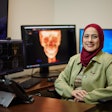
Dental students tend to underreport exposures to bloodborne pathogens because of low-risk perception, lack of time, and excessive paperwork, according to a study conducted at the University of Pacific Arthur A. Dugoni School of Dentistry (Journal of Dental Education, April 2011, Vol. 75:4, pp. 544-548).
But an educational campaign designed to raise awareness among the students regarding the importance of reporting exposure incidents helped reverse this trend, the researchers found.
Lead author Eve Cuny, MS, an assistant professor at the dental school, and her colleagues knew from the medical literature that exposure incidents are underreported in healthcare settings, but no information was available for dental school clinics, she told DrBicuspid.com. Based on anecdotal evidence, the researchers believed that students were underreporting injuries when they perceived there was little or no risk.
— Eve Cuny, MS
"Often students would present days or even weeks after an injury with anxiety over having not done follow-up at the time, and of the reports we did receive, there was a disproportionate percentage of source patients with a history of bloodborne diseases," she said. "This led us to believe that the students were conducting their own risk assessment based on the patient's medical history."
Because this method is unreliable, she and her colleagues wanted to ensure that the students understood the importance of follow-up after an exposure. So they designed a survey at the end of the 2006-2007 academic year to be given annually to each of three classes at the dental school, which has a three-year curriculum.
Surveys of the dental students found that senior students from the class of 2007 reported only 43% of the exposure incidents they experienced in their final year of clinical education, after reporting 71% of incidents in their second year.
Key reasons for this underreporting were that the students felt there was little or no risk or they were concerned about taking time away from clinic to report and seek follow-up.
Protocols forgotten over time
The bloodborne exposure (BBE) protocol is usually explained to students during their clinic orientation just before beginning clinical patient contact, noted the study authors. But the surveys and classroom feedback indicated that the protocol is forgotten by a majority of students by the time they are in their second year, Cuny said.
So in 2007, the researchers launched an educational campaign to raise awareness among the students about the importance of reporting exposure incidents. The campaign emphasized that BBEs must be reported even if the individual exposed perceived low risk or did not elect to follow up with postexposure protocol.
Several communication methods were used to raise awareness of the proper method and importance of reporting BBEs, including mass email reminders, discussions at mandatory class meetings, annual clinic orientations, inclusion of BBEs, and postexposure management in the didactic program.
After the intervention, the senior class of 2008 reported 79% of the experienced exposure incidents, up from 68% in the second year.
"This was not only a significant improvement over the previous year, but also demonstrated an improvement in reporting from their junior year to senior year, reversing the previously noted trend for exposure reporting to drop off in the senior year," the authors noted.
Dugoni is likely not unique in its underreporting rates, according to Cuny, and all schools can benefit from sustained efforts to ensure everyone knows what to do if they have an exposure incident, she said.
It's important to make the medical follow-up accessible and convenient, address cost of follow-up, and train first responders who can provide assistance to the exposed person, talk to the patient, and collect the information that the medical professional will need to assess whether postexposure treatment is indicated, she added.
"We were surprised at the high level of underreporting in the initial survey, but found that a variety of communication efforts had an immediate and positive effect," Cuny concluded.
Sabine Wicker, MD, from the Johann Wolfgang Goethe-University in Germany, who has done similar research (International Archives of Occupational and Environmental Health, January 2010, Vol. 83:1, pp. 77-83), said the Dugoni study results highlight the need for training and education concerning safe working techniques.
Exposures of bloodborne pathogens pose a serious risk to dental healthcare workers, and needlestick injuries represent an important occupational health concern in dentistry, Dr. Wicker said.
"Dental healthcare workers must be aware of the importance of reporting needlestick injuries so that they receive the appropriate treatment," she concluded.



















